Classic Gear: “The Telecaster”
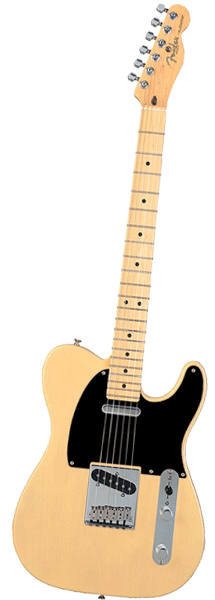
The Fender Telecaster is perhaps the most iconic and revered electric guitar. Maybe 2nd fiddle to its brother the Stratocaster, championed by Eric Clapton and Jimi Hendrix, the Tele (telly) is simply cooler, still in style today thanks to its boxier, understated design. Distinguishing guitar models by their sound is usually a job only for guitar geeks, but the Tele’s clean treble cut can be heard a mile away by anyone.
One of the neat things about the Telecaster is an element nobody uses. The bottom pickup, close to the bridge and mainly responsible for the Tele’s characteristic high tones, was originally designed with a faceplate (like so) dubbed an “ashtray.” But since it would get in the way of so many player’s strumming hand, the ashtray would be ripped off in nearly every case, influencing future designs to forego the plate completely, leaving an uncovered and unfinished metal bracket encasing the pickup. Accidental design couldn’t get much better.
The Telecaster is known for its many modifications though, and often is a guitar hot-rodder’s first pick. The most common mod is the addition of humbucker pickups, used to fatten up the sound. Another popular modification is the addition of a B-Bender, used by country guitarists to emulate the pedal steel (see below). While the model pictured to the right is the classic, popular variants include the Thinline, featuring a small hollow body section with a fancy F-hole, and the Deluxe, though these models both use humbuckers and tend to lose the characteristic sound to a degree.
The hard body and close bridge pickup give the Tele its thin, gritty sound that has been a staple for the genres of country, rock, blues, and funk music – Sly Stone, among others, proved this guitar was perfect for the high-end choppy rhythms that drive the genre. As for the rest let’s take a listen:
Examples
Buck Owens and his Buckaroos defined the guitar-bassline and chickin pickin’ style integral to the Bakersfield sound. Don Rich, Buck’s right hand man, was not only a fine singer but an excellent country guitar player and hero for the telecaster. This song is straight up country rock ahead of its time:
Buck Owens and his Buckaroos – Buckaroo
Keith Richards popularized use of the Telecaster in a rock context using alternate tunings and strumming the hell out of it. Probably the best riff-based guitarist out there, his licks are one of a kind and owe a lot to the Telecaster.
The Rolling Stones – Midnight Rambler
Co-inventor of the B-Bender and a big favorite around these parts, Clarence White owned one of baddest Telecasters of all time (now apparently heisted by Marty Stuart). A set of complex mechanics in the back enabled CW to bend his 2nd highest string upwards a full step, mimicking the sound of a pedal steel guitar. In the track below, an excellent instrumental version of this classic, listen to him pluck the harmonic note and bend it up… nasty. For more on how the B-Bender works, take a look at this guy’s video. [EDIT: Okay, I just learned this Nashville West recording was pre-bender, must be a whammy bar].
Nashville West – Ode To Billy Joe
Speaking of badass Tele’s, you’ve got to respect Joe Strummer’s committment to a good guitar, using his beautiful beat-to-death axe exclusively his whole life. “Ignore Alien Orders” read the sticker that defined his guitar for so many… sometimes you just need a good sticker on your Tele.
The Clash – The Right Profile
As always, let us know about your own favorite Tele players or recordings…
Also Recommended
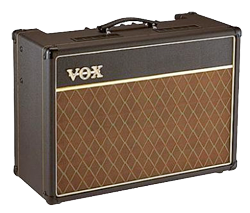
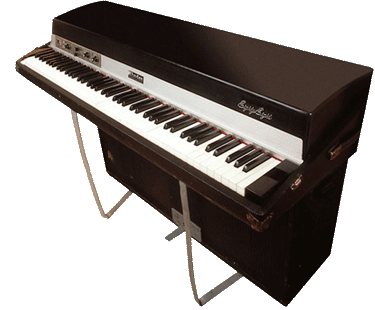
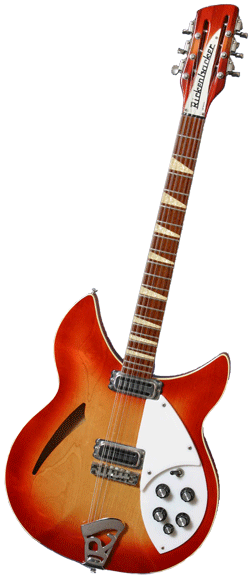
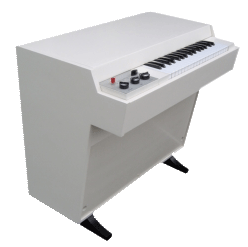
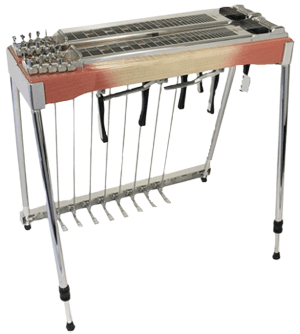
Love that B-Bender video. And Don Rich.
Love the Tele too. (Though emulating Buddy Holly made me a Stratocaster player back in the day.)
Nice posting. You might enjoy Bill Kirchen’s “Hammer of the Honk Tonk Gods.” It’s a tribute to the Tele, and in it he name-checks about a dozen famous Tele players.
Great article, keep up the excellent work!
The Tele is one hell of a versitile guitar…If I had to pick just one guitar it would either be a Tele or Les Paul Deluxe.
Nice Post!
My favourite telecaster player is Hugh Cornwell. My favourite Stranglers song is “Ugly.” One other thing about the Telecaster – it has a bad attitude.
Well, I’m one of those geeks who can distinguish guitars by their sound (and I don’t even play guitar; I’m a drummer). I am convinced that the Telecaster is more popular in rock and roll than most people know. It’s the guitar that guitarists like in the studio but not on stage. For example, Jimmy Page used a ’59 Tele for the “Stairway to Heaven” solo
OK, how long have you got? The Tele has always been thought of by musos as a one-sound guitar, and in the hands of most players that’s a fair estimate, with the definitive “Tele sound” producers being Steve Cropper of the MGs in soul and the ubiquitous James Burton in country, who both reaped the obvious benefits of its uncomplicated, honest construction. However, nothing about electric guitars is ever that simple.
The ultimate Telecaster player, IMHO, was Roy Buchanan. Anything off his eponymous first album, notably the successful single “Sweet Dreams”, will give you the picture. Roy managed to get an unbelievable range of sounds from the Tele in the same way as Hendrix did from the Strat. This guitar isn’t supposed to be able to sound hot and horny like that – it’s a testament to Roy’s unfathomable technique. On subsequent albums his material moved from country through blues and into soul, but the Tele and his sound stayed for the ride. I recommend Sweet Dreams: The Anthology on Polydor Chronicles.
The other absolute Telecaster virtuoso was Danny Gatton. Like Roy, Danny transcended the “Tele sound” in a dazzling variety of styles and tones. Like Roy, he also came to a sad and sticky end. The recommended compilation is Hot Rod Guitar: The Danny Gatton Anthology on Rhino.
MIke Bloomfield used a Tele for all his work with Dylan. His sound, along with Al Kooper’s Hammond, utterly defined “Like A Rolling Stone”. Even when Mike switched, like so many others, to a Les Paul in the late sixties, he still searched for that clean, sustained, middly tone.
Jeff Beck used a Tele during his tenure with the Yardbirds before switching to his well-known muddy brown Les Paul. Example: the screeching raga lick on “Over, Under, Sideways, Down”.
It’s little-known that Jimmy Page used a standard Tele for almost the whole of the first Led Zep album, including the violin-bow histrionics on “Dazed And Confused”. The only other electric guitar he used on the album was a Danelectro Shorthorn for the slide passages. For recent work he has returned to . . . you guessed it, a Tele, albeit with B-bender.
Brit jazz maestro Jim Mullen has always used a Tele, played thumbwise like Wes Montgomery. I can’t think of a less jazz-friendly guitar, but Mullen makes it work. On a good day he can sound like George Benson in full flight.
Coming more up to date, Jonny Greenwood of Radiohead is seldom seen using anything but a Tele. Check out the crunching sounds and textures on “Creep” from the first album Pablo Honey.
Note that anything other than a standard Tele is not really a Tele. The Thinline with semi-solid body and the Custom and Deluxe with one and two humbucking pickups respectively were desperate nods to Gibson in the early seventies when Les Pauls and 335s ruled and the standard Tele was woefully out of fashion. What goes around comes around, and today the Tele in standard trim is probably the most trendy guitar you can play if you’re a young indie-rock performer.
I’ve got a ’71 standard Tele which I’ve had for 33 years and which was my main tool through twenty years as a semi-pro covers band performer. It did everything from country swing to disco via riff-rock and reggae. Simply the best electric guitar ever made.
For an absolutely top article on Gene Parsons, Clarence White and the history of the B-bender, from Vintage Guitar magazine, go here:
Many players consider the Tele the most versatile guitar.
The U.N. of all things Tele is http://www.tdpri.com where devotees divide into two camps when it comes to their beloved guitar. For many, as Len says above, Tele’s are for one thing: Twang. That compressed bitey treble without much sustain.
But that’s really an opinion, a particular stylistic association with a tone that only Tele’s do – the bridge pickup with full treble. But turn the treble down and its something different; select both pickups and its another thing entirely, (and IMHO the most balanced and desirable electric guitar sound), select the neck pickup alone and you’ve a tone thats good for jazz and obviously much more. On paper the Strat seems more versatile, having more tones, but most of these tones shout ‘Strat!’
BTW this site’s most useful, and Len’s post too – I’m off to discover those players now, cheers.
Re. the edit on Clarence White above, on “Ode To BIlly Joe” CW achieved the string-bend effect by hitting an open harmonic and then literally bending – or getting someone else to bend – the vibrating string behind the nut. This was a trick he and others (Roy Buchanan, for one) commonly used prior to the String Bender, but his wanting to do this more easily led to the String Bender’s inception. Another fine user of the Bender is Dave Edmunds: listen to his simple but sinuous solos on “I Knew The Bride” and “Crawling From The Wreckage”, where he lays down the 335 and picks up the Tele. Amazingly, in the first half of the 1970s Teles were so unfashionable you could barely give them away. I had a yen for a Tele after seeing Deaf School (who were resolutely unfashionable) using two of them, and decided to get one. I saw an ad in Melody Maker for one being sold at a knockdown price in Marazion, Cornwall, early in 1976, but didn’t proceed on it. Six months later we were holidaying down that way and somehow I’d still got the guy’s phone number. On an impulse I called him up to see if he still had the Tele, and he did: he claimed no-one was prepared to travel that far from London to buy it. I took it of him at a price that was very nice and have it to this day.
I’m pretty sure Keith didn’t use a Tele on Midnight Rambler…I don’t think he started using one at all until 1970…but maybe I’m wrong. Great song, none the less